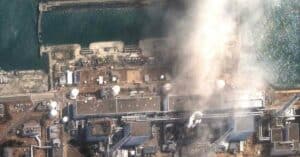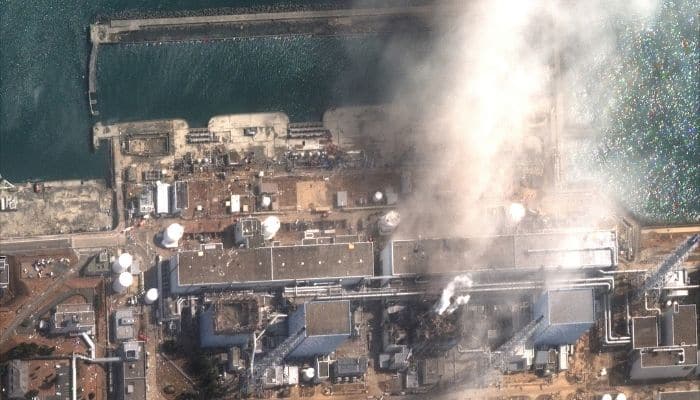Japan To Release Over 1 Million Tons Of Treated Radioactive Water From Fukushima Daiichi Nuclear Plant

Pemex Oil Platform In Gulf Of Mexico Destroyed By Fire, Killing 2 Workers While 1 Goes Missing
July 10, 2023
Five Ice-Class Vessels To Be Deployed By A Chinese Shipping Firm On The Northern Sea Route
July 10, 2023
Japan has obtained the endorsement of the International Atomic Energy Agency (IAEA) for its plan to discharge over one million tons of “treated radioactive water” from the compromised Fukushima Daiichi nuclear power plant. The IAEA conducted a comprehensive safety review, concluding that the release would have minimal environmental effects and aligns with established water discharge practices from nuclear plants worldwide.
The IAEA’s safety review addressed technical inquiries and provided scientific rationale, assuring that the impact of radiation on humans and the environment would be negligible. The endorsement, however, has encountered significant opposition from nearby fishing communities and neighbouring countries such as China and South Korea, who share international waters and express concerns about potential consequences.
Local fishing communities in Japan fear that releasing treated radioactive water could undermine the progress made over the past decade in rebuilding their industry. They anticipate a loss of consumer trust, leading to reduced demand and lower prices for their seafood products. Despite rigorous radiation testing measures implemented by Fukushima authorities, consumer scepticism regarding the safety of fish and agricultural produce from the region remains challenging.

Despite the opposition, the Japanese government has announced its plan to begin discharging radioactive water before the end of the summer season. The country’s Nuclear Regulation Authority has confirmed that the necessary equipment and facilities for water discharge have undergone thorough inspections and are deemed suitable.
To ensure safety, Japan intends to subject the water to filtration processes to remove most radioactive substances before their release into the ocean. However, it should be noted that tritium, a hydrogen isotope present in the water, is difficult to separate. The treated water will be diluted to levels significantly below internationally approved standards, adhering to established safety measures.
While tritium is generally regarded as posing minimal harm, there is a potential risk of developing cancer through ingestion, mainly by consuming seafood. The IAEA emphasizes that nuclear plants worldwide employ similar methods for managing wastewater containing low-level tritium concentrations and other radionuclides.
The Fukushima Daiichi nuclear plant was struck by a powerful 9.0 magnitude earthquake and a catastrophic tsunami on March 11, 2011, causing severe damage to the facility. Meltdowns occurred in reactors 1, 2, and 3, releasing substantial radiation into the environment. Since then, approximately 1.33 million cubic meters of water, consisting of groundwater, rainwater, and cooling water, have accumulated at the site of the nuclear plant.
The decision to release treated radioactive water from the Fukushima Daiichi plant remains a contentious issue, with concerns raised by local fishing communities and neighbouring countries. As the IAEA’s safety review affirmed, the Japanese government maintains that the planned method adheres to established protocols and emphasizes the negligible environmental impact.
Reference: Hindustan Times, npr, edition.cnn
Japan To Release Over 1 Million Tons Of Treated Radioactive Water From Fukushima Daiichi Nuclear Plant appeared first on Marine Insight – The Maritime Industry Guide
Source: Maritime Shipping News


